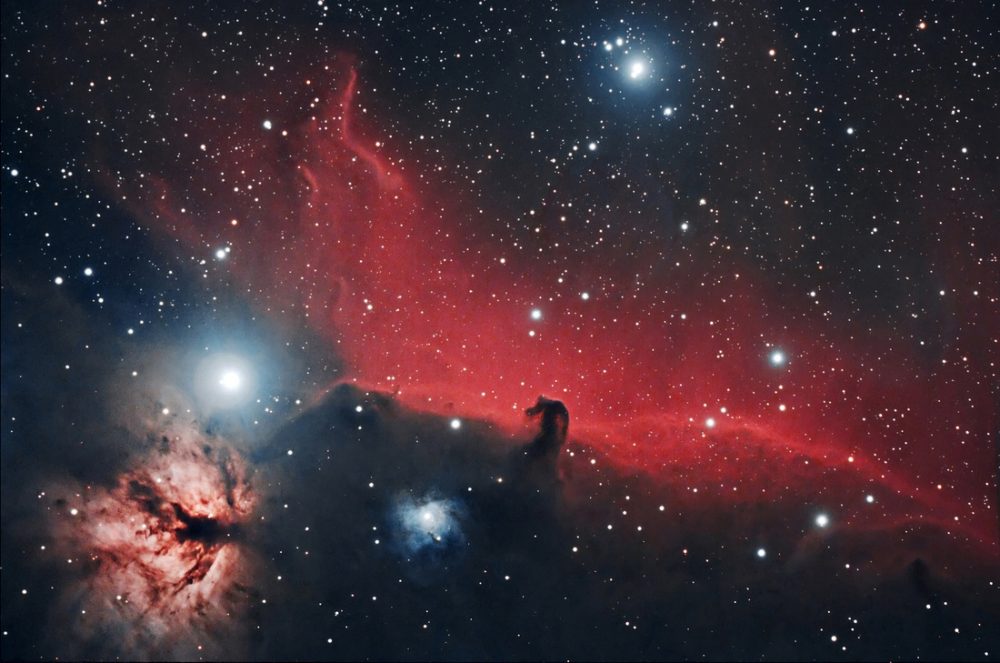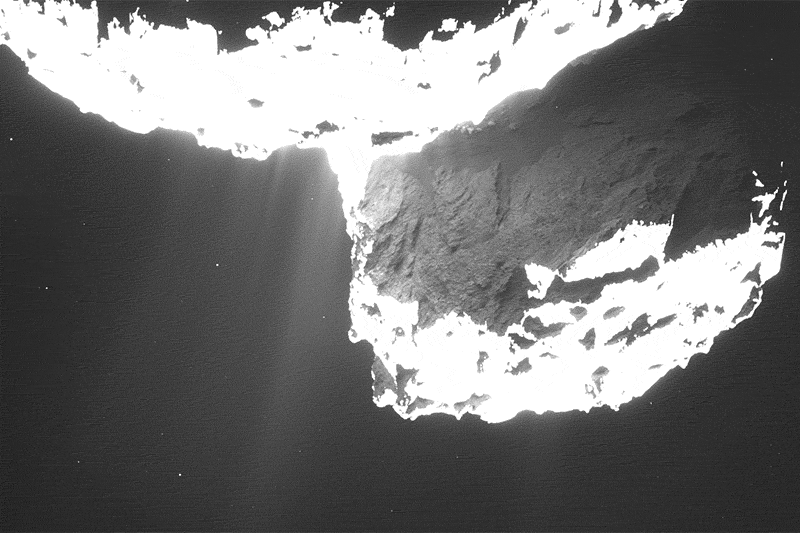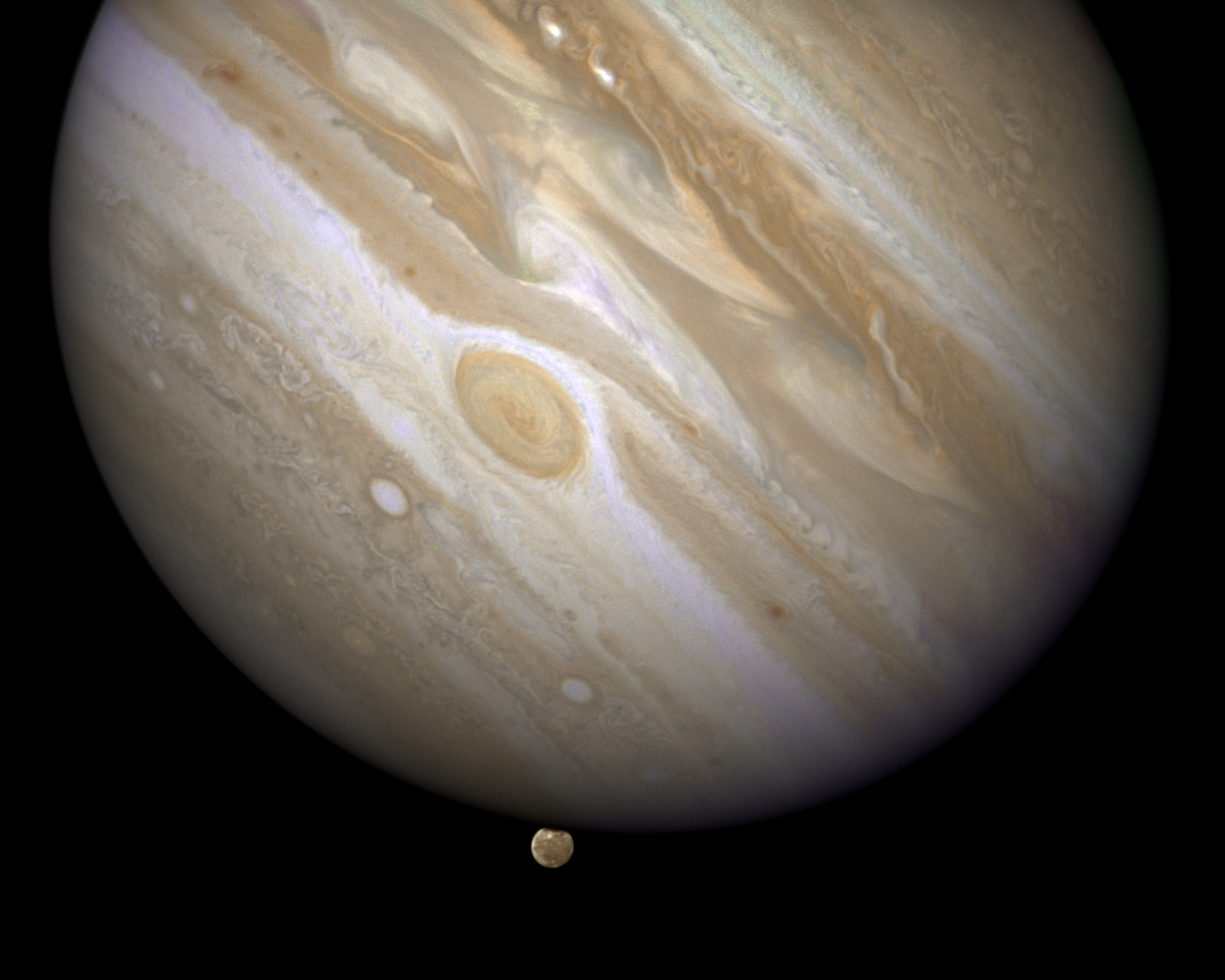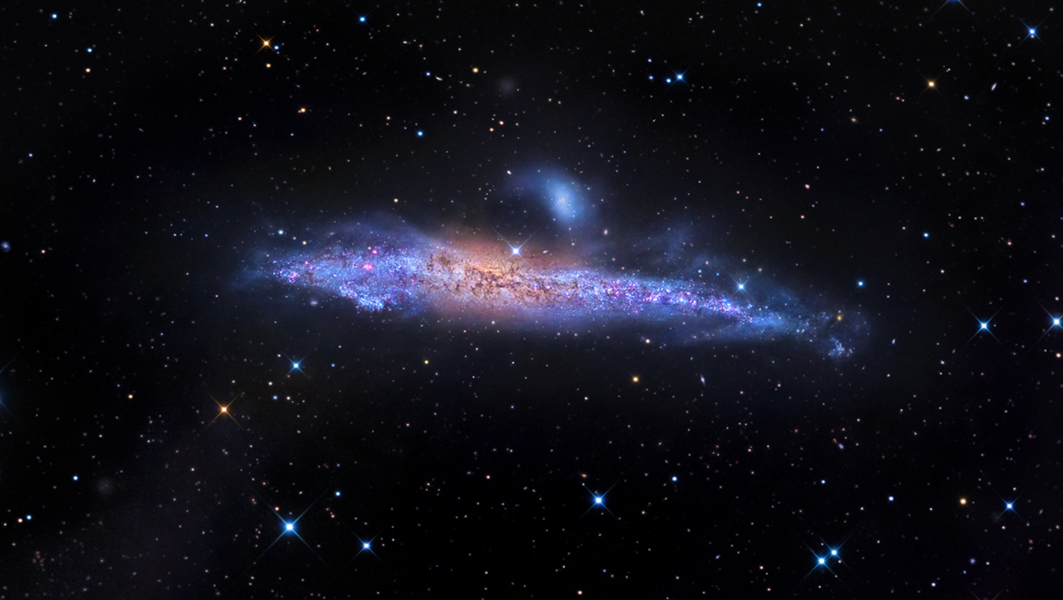YosemiteSam
Unfriendly and Aloof!
- Messages
- 45,858
- Reaction score
- 22,195

In this image taken by the Cassini spacecraft Saturn's moons Enceladus (front) and Tethys (back) line up almost perfectly for Cassini's cameras. Also visible is a part of Saturn's ring system (https://goo.gl/4t2E5g).
The image was obtained at a distance of approximately 1.3 million miles (2.1 million kilometers) from Enceladus. Image scale on Enceladus is 7 miles (12 kilometers) per pixel. Tethys was at a distance of 1.6 million miles (2.6 million kilometers) with a pixel scale of 10 miles (16 kilometers) per pixel.
More information here:
http://photojournal.jpl.nasa.gov/catalog/PIA18349
Enceladus
Enceladus has a diameter of 504 kilometers (313 miles) and is orbiting Saturn every 1.4 Earth days at a distance of 238,037 km (147,909 miles). It was discovered August 28, 1789 by William Herschel. More information here:
https://en.wikipedia.org/wiki/Enceladus
Tethys
Tethys has a diameter of 1,062 kilometers (660 miles) and is orbiting Saturn every 1.9 Earth days at a distance of 294,619 km (183,068 miles). It was discovered in 1684 by Giovanni Domenico Cassini. More information here:
https://en.wikipedia.org/wiki/Tethys_(moon)
More on the Cassini spacecraft:
https://www.nasa.gov/mission_pages/cassini/main/index.html
https://en.wikipedia.org/wiki/Cassini–Huygens
Image credit: PIA18349: Bull's-eye Moons NASA/JPL-Caltech/Space Science Institute http://goo.gl/73W4DL
https://lh5.***BROKEN***/-31YysKOEBHE/Vm77zt8KPTI/AAAAAAAAbe8/huhisRHlRiw/w980-h709-no/PIA18349.jpg
The image was obtained at a distance of approximately 1.3 million miles (2.1 million kilometers) from Enceladus. Image scale on Enceladus is 7 miles (12 kilometers) per pixel. Tethys was at a distance of 1.6 million miles (2.6 million kilometers) with a pixel scale of 10 miles (16 kilometers) per pixel.
More information here:
http://photojournal.jpl.nasa.gov/catalog/PIA18349
Enceladus
Enceladus has a diameter of 504 kilometers (313 miles) and is orbiting Saturn every 1.4 Earth days at a distance of 238,037 km (147,909 miles). It was discovered August 28, 1789 by William Herschel. More information here:
https://en.wikipedia.org/wiki/Enceladus
Tethys
Tethys has a diameter of 1,062 kilometers (660 miles) and is orbiting Saturn every 1.9 Earth days at a distance of 294,619 km (183,068 miles). It was discovered in 1684 by Giovanni Domenico Cassini. More information here:
https://en.wikipedia.org/wiki/Tethys_(moon)
More on the Cassini spacecraft:
https://www.nasa.gov/mission_pages/cassini/main/index.html
https://en.wikipedia.org/wiki/Cassini–Huygens
Image credit: PIA18349: Bull's-eye Moons NASA/JPL-Caltech/Space Science Institute http://goo.gl/73W4DL
https://lh5.***BROKEN***/-31YysKOEBHE/Vm77zt8KPTI/AAAAAAAAbe8/huhisRHlRiw/w980-h709-no/PIA18349.jpg












